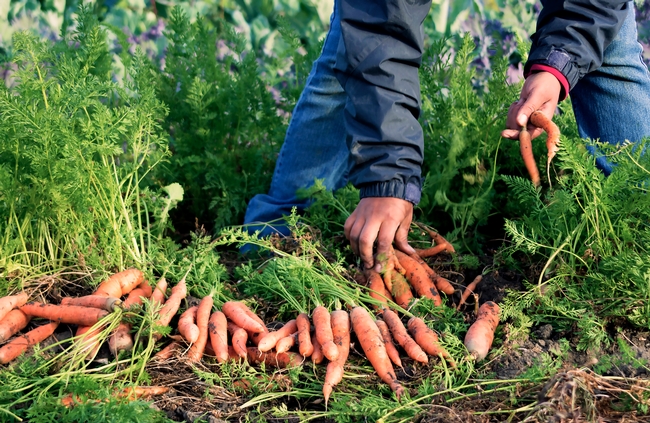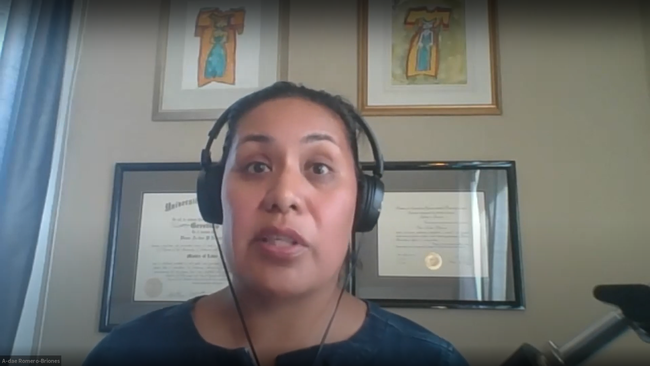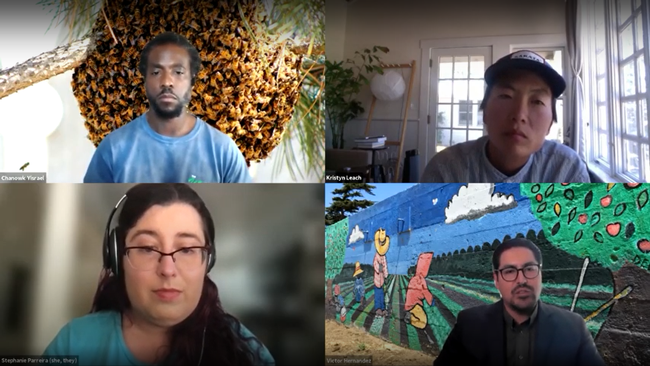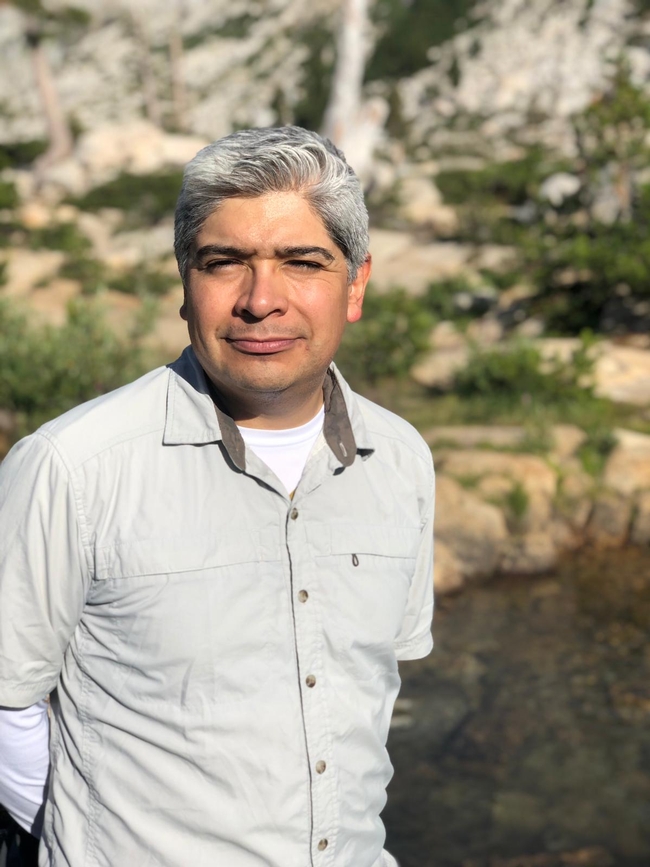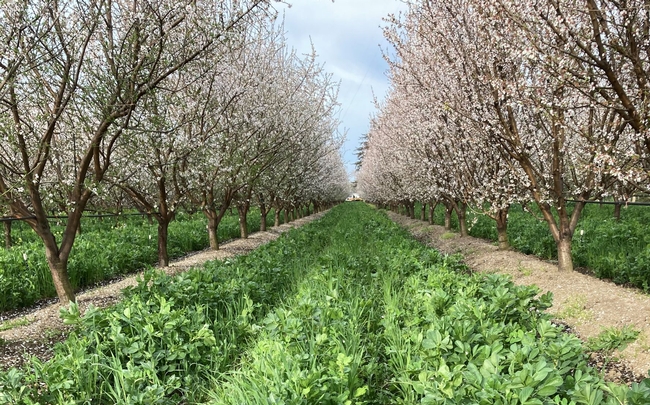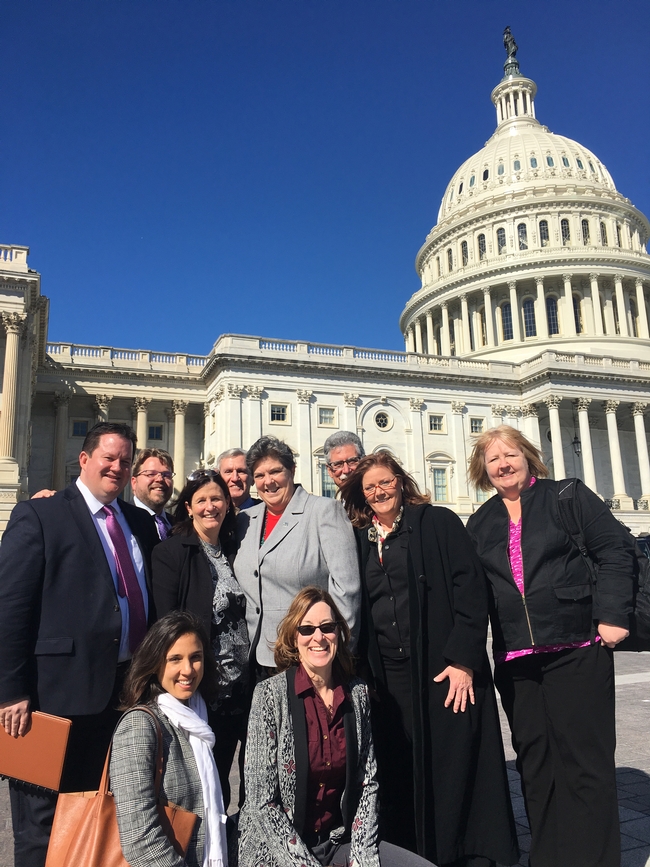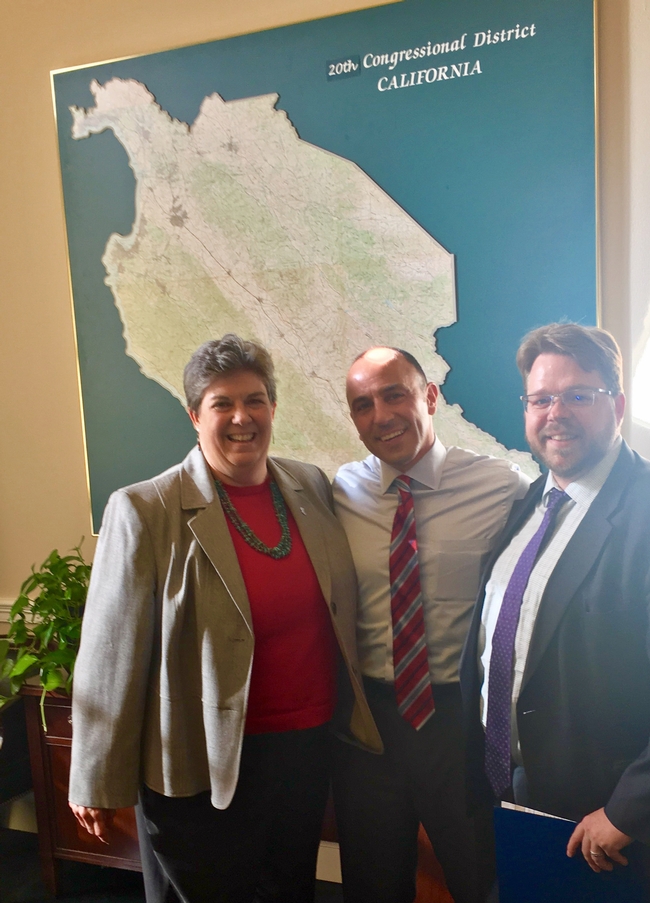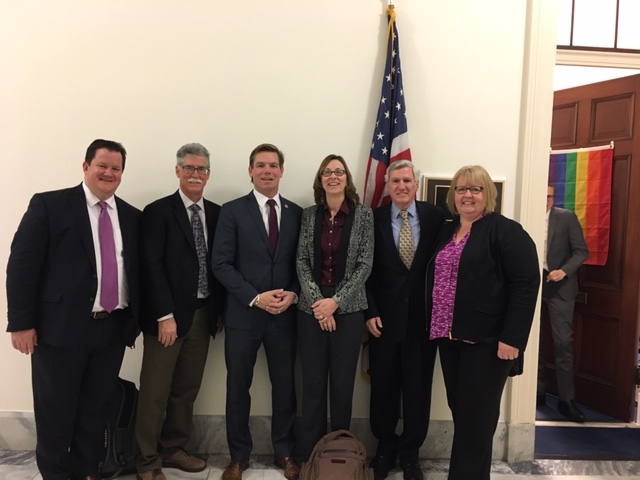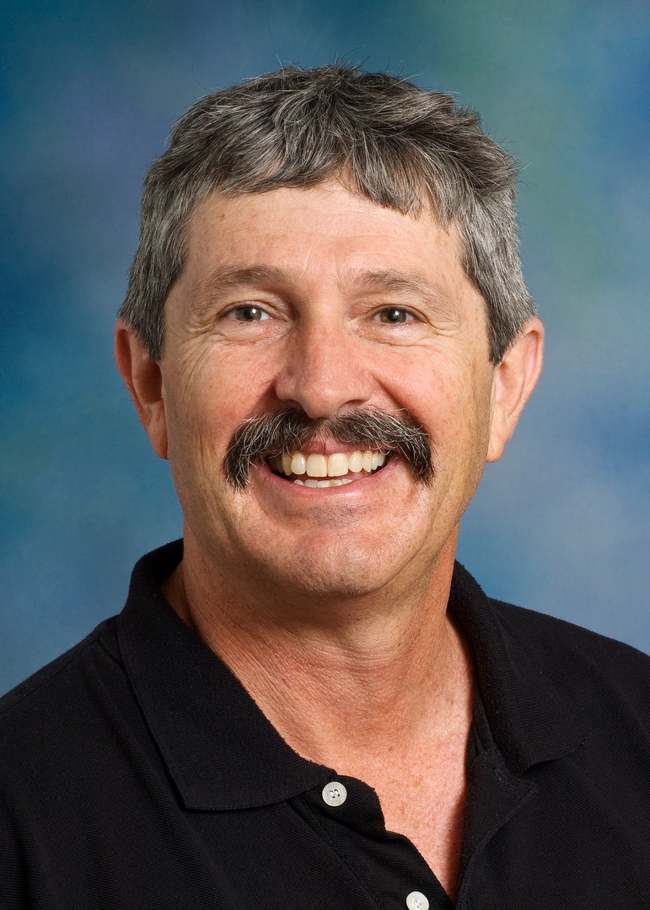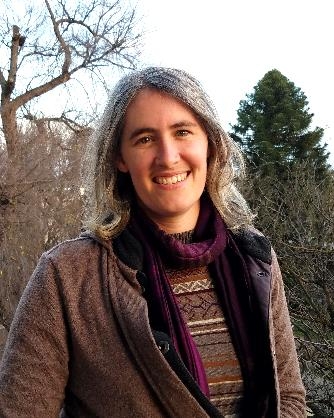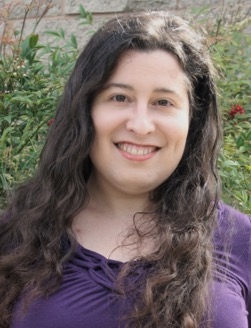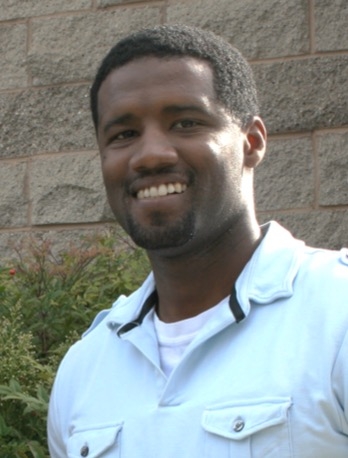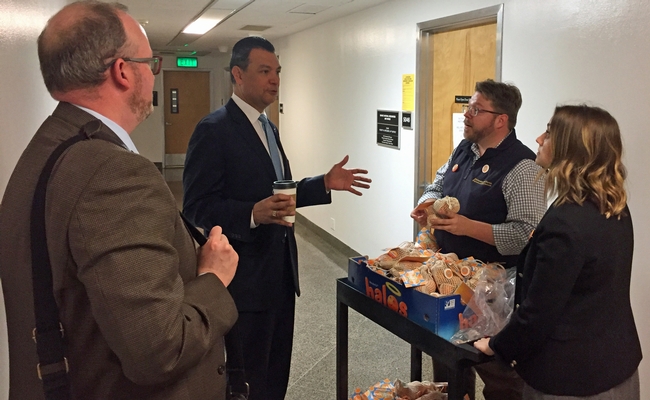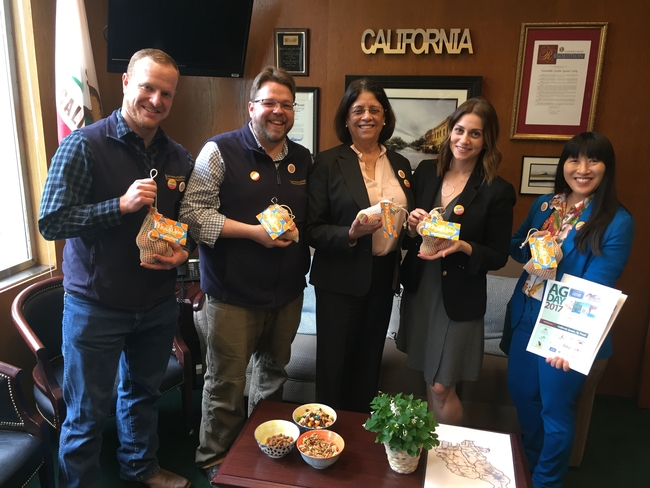Posts Tagged: SAREP
Farmers of color share their contributions, concerns in UC SAREP webinar series
When agricultural advisors came to the Cochiti Pueblo in New Mexico during the 1940s, they lined the irrigation ditches with concrete, in the name of boosting efficiency and productivity. But in single-mindedly focusing on water delivery, they neglected to consider how the previously inefficient seepage sustained nearby fruit trees.
Their actions, as well-intentioned as they might have been, disrupted the local ecosystem and killed the trees that had fed many generations, according to A-dae Romero-Briones, who identifies as Cochiti and as a member of the Kiowa Tribe.
“In my language, we call the extension agents ‘the people who kill the fruit trees,'” said Romero-Briones, director of the Food and Agriculture Program for the First Nations Development Institute, a nonprofit that serves Tribal communities across the mainland, Alaska and Hawaii.
The historically tense relationship between Indigenous peoples and government-affiliated programs is one of the many complex dynamics discussed in a six-part webinar series, “Racial Equity in Extension,” facilitated by UC Sustainable Agriculture Research and Education Program.
Making communities of color in the agricultural sector more visible is a priority for Victor Hernandez, a sociologist and outreach coordinator for the USDA's Natural Resources Conservation Service. Hernandez, who has organized “Growing Together” conferences for Latino and Black farmers, is trying to get more farmers of color to participate in the upcoming 2022 Agricultural Census.
“If we cannot quantify the demographic, we cannot justify the need,” emphasized Hernandez, explaining that his office uses the data to direct resources that advance equity in service, program delivery and distribution of funds.
A legacy of mistrust
At the same time, however, Hernandez also acknowledged the challenges in registering growers of color for the census, conducted by the USDA's National Agricultural Statistics Service. (According to Brodt, USDA's most recent agricultural census, dating to 2017, counts approximately 25,000 producers of color among 128,535 total producers in California.)
“Many of us that are considered socially disadvantaged or historically underserved…a lot of times our peoples come from [nations with] oppressive governments,” Hernandez said. “And so when you come to the United States and you begin to build your life here, to go and engage with the federal government is not the first knee-jerk reaction.”
On top of government mistrust and fears of deportation or detention, other immigrant groups have seen mainstream agriculture – borne by the “Green Revolution” wave across the globe – replace deep-rooted cultural practices, said Kristyn Leach of Namu Farm in Winters.
“It just makes these small farmers distrust our own knowledge, the knowledge that's existed for centuries – before the kind of current iteration of agriculture that we're situated within right now,” said Leach, who works to preserve the agricultural heritage of her Korean ancestors, and facilitates a farmers' collaborative called Second Generation that adapts Asian crop varieties to climate change.
According to Romero-Briones, a collective memory of supplanted culture also lingers in Indigenous communities. In the Cochiti Pueblo, “primarily a subsistence agriculture community” with a long history of corn cultivation, their practices are distinct from those in the mainstream – including regenerative and sustainable agriculture.
Building relationships takes commitment
Given that legacy of cultural displacement and appropriation, how do extension professionals and other agricultural advisors slowly rebuild trust with communities of color? For Romero-Briones, it begins with a genuine respect for Indigenous practices, and she urges interested people to contact their local tribal historic preservation officer to begin strengthening those connections and understanding – beyond a couple of phone calls.
“As someone who works with Indigenous people all day, even I need to recognize sometimes I have to meet with people up to 12 times before we actually start talking about the work that I initially wanted to talk to them about,” Romero-Briones said.
In a similar vein, Chanowk Yisrael, chief seed starter of Yisrael Family Farms, encouraged listeners to reach out to members of the California Farmer Justice Collaborative – an organization striving for a fair food system while challenging racism and centering farmers of color.
“To use a farm analogy: we've got this ground, which is the farmers of color who have been neglected for a long period of time,” said Yisrael, who has grown his farm in a historically Black neighborhood of Sacramento into a catalyst for social change. “It's not just going to be as simple as just throwing some seeds and things are going to come up; you're going to have to do more – that means you got to get out and do much more than you would do for any other community.”
Investing time in a community is one thing – and backing it up with tangible resources is another. Technical expertise is only the “tip of the iceberg,” Leach said, as historically marginalized groups are also seeking land access and tenure, more affordable cost of living, and access to capital.
“All of those things are actually much bigger burdens to bear for most communities of color than not having the knowledge of how to grow the crops that we want to grow, and not knowing how to be adaptive and nimble in the face of climate change," Leach explained, highlighting California FarmLink as an essential resource. (“Understanding Disparities in Farmland Ownership” is the next webinar in the SAREP series, set for Nov. 19.)
Bringing diverse voices to the table
Another key is ensuring that farmers and farm workers of color are represented in management and decision-making processes. Samuel Sandoval, a professor in the Department of Land, Air and Water Resources and UC Cooperative Extension specialist in water management, develops outreach programs in English and Spanish for everyone from farm workers to the “boss of the boss of the boss.”
“It has to be changed,” he said, “because at the end, the person who is going to operate the irrigation system and turn on or off the valves, the person who is looking if there's a leak or not – that's the person who's not being informed, or has not been informed on purpose.”
That exclusion of certain groups can lead to a loss of invaluable knowledge. Leach said there is a real danger in ignoring the wisdom of communities that have contributed so much to the foundation of food systems in California and around the globe.
“These really kind of amazing, sophisticated and elegant agroecological systems that we don't often legitimize through the scientific language and perspectives aren't seen as being really technically proficient – but, in many ways, they're more dynamic and more resilient than the things that we're perpetuating right now,” she said.
As a concrete example, Sandoval said that while extension advisors and specialists conduct studies to remedy a plant disease, farm workers might be developing – separately and in parallel – their own solutions by asking for advice from their social networks via WhatsApp, a phone application.
A reimagining of collaboration, Sandoval said, would include (and compensate) people working in the field for sharing their perspectives – bringing together academics and farmers, integrated pest management experts and pesticide applicators, irrigation specialists and those who do the irrigation.
A need to look within
Concerns about inclusion and validating alternate sources of knowledge apply also to the recruitment process in extension. Leach said that she has seen listings for advisor jobs that would require, at a minimum, a master's degree – which would automatically disqualify her, despite her extensive knowledge of Asian heirloom vegetables.
“When you look at a job description and you see ‘Asian crop specialist,' only required qualification is a master's degree, and then somewhere down the long list of sort of secondary desired, recommended things is some knowledge of Asian crops or communities…you know that just says a lot in terms of what has weight,” Leach explained.
Before organizations can authentically connect with communities of color, they should prioritize diversity in their own ranks, said Romero-Briones. First Nations Development Institute had to ensure that they had adequate representation across the many Tribes that they serve.
“Before we start looking out, we have to start looking in,” she explained, “and that means we have to hire Indigenous people who know these communities.”
For extension professionals and other members of the agricultural community in California, the UC SAREP webinar series has helped spark that introspection and a meaningful reevaluation of institutional processes and assumptions.
“These discussions have been tremendously illuminating and eye-opening,” Brodt said. “But hearing and learning is just the start – it's incumbent on us, as an organization and as individuals, to take action to ensure that farmers of color and their foodways are truly respected and valued.”
SAREP offers small grants
The 2022/23 SAREP Sustainable Agriculture & Food Systems Small Grants Program is accepting applications until 12 noon PST, Feb. 15, 2022.
SAREP invites proposals for small grants to fund pilot projects and research projects that support California's farmers, ranchers and land stewards and/or rural, urban, and Tribal communities to plan, implement or evaluate sustainable agriculture or food systems strategies.
Program Priority Areas
UC SAREP will fund projects that fall within two priority areas:
1. Support California's farmers, ranchers and land stewards of all scales in identifying, piloting and transitioning to
- environmentally regenerative approaches to producing crops and livestock (including but not limited to soil health, organic and agroecological practices, integrated pest management, crop diversification);
- pathways for realizing economic return from ecologically-sound crop management practices and fair labor practices;
- marketing and distribution strategies that support diversified, decentralized, and locally self-organized supply chains;
- strategies that promote producer-to-producer networking and producer-to-supply chain networking
2. Support California's rural, urban, and Tribal communities to identify, implement and evaluate strategies to
- expand access to healthy, sustainably produced, culturally appropriate foods;
- ensure worker well-being across the food chain;
- minimize the community and environmental costs of food production and distribution;
- strengthen connections between consumers and producers;
- establish and strengthen producer-to-producer connections and producer-to-supply chain connections
Priority will be given to projects that benefit socially disadvantaged communities and/or socially disadvantaged farmers and ranchers. We strongly encourage projects that are led by individuals and/or community-based organizations from these groups.
We are interested in projects that build the capacity of farming and food systems businesses and organizations to become reflective, adaptive learning organizations that can respond effectively to ecological, economic, and social change and disruption.
Proposal categories
Proposals are requested for three types of projects:
- Planning Grants
- Education and Outreach Grants
- Applied Research Grants
Information about each category and examples of previously funded projects, can be found at https://sarep.ucdavis.edu/grantsFY21-22.
Who can apply
Eligible applicants include farm or food system businesses operating in California, nonprofit, tax-exempt organizations operating in California, state and local government agencies, tribal governments, and California public and private institutions of higher education.
Applicants must demonstrate meaningful collaboration and involvement of stakeholders in the design and execution of the project. Priority is also given to projects that foster cross-collaborations between multiple types of applicants, contributing to a unified approach in addressing core areas of concern.
For more information and requirements, please visit the SAREP Sustainable Agriculture and Food Systems Small Grants Program webpage or contact Rachael Callahan at rmcallahan@ucanr.edu.
UC ANR goes to Washington
“We visited offices of 26 of California's 55-member congressional delegation in two days!” said Lucas Frerichs, government and community relations manager.
On March 6-9, a UC ANR delegation attended the 35th Annual Council on Agriculture Research, Extension and Teaching (CARET) meetings in Washington D.C. CARET is part of the Association of Public and Land-grant Universities (APLU). They also made congressional visits to explain the importance of science and research to California.
“Our primary purpose for the visits was to show the members of Congress all the good work UC ANR is doing throughout California, whether it's through our Cooperative Extension efforts, 4-H Youth Development program, nutrition programs, Integrated Pest Management, Master Gardeners, etc.,” Frerichs said, “and the value that Californians receive from the money Congress allocates to the university for UC ANR programs.”
Vice President Glenda Humiston was joined by AVP Wendy Powers, UCB College of Natural Resources Dean Keith Gilless, UCR College of Natural and Agricultural Sciences Dean Kathryn Uhrich, Nutrition Policy Institute Director Lorrene Ritchie, UC Cooperative Extension Specialist Clare Gupta, Chief Innovation Officer Gabe Youtsey, and Frerichs. Industry partners Bill Frost, former UC ANR AVP; Cher Watte, executive director of the California Asparagus Commission; Mike Mellano, fresh cut flower grower; Dina Moore, Humboldt County rancher; and Jean-Mari Peltier, managing partner of Environmental Solutions Group, served as CARET delegates from California.
The group split up into teams to visit the offices of Senators Dianne Feinstein and Kamala Harris, agriculture committee members, House Majority Leader Kevin McCarthy, Minority Leader of the House of Representatives Nancy Pelosi and other California representatives.
Although no U.S. secretary of agriculture had been confirmed at the time of their visit, members expressed their support for agriculture.
“One thing that members of Congress – Republicans and Democrats – can certainly agree on is that the support for agriculture and the University of California is strong,” Frerichs said.
Read more about the CARET visits in Powers' ANR Adventures blog.
Names in the News
Bell named Vice Provost–Statewide Programs/Strategic Initiatives
Mark Bell will join UC ANR on May 1 as Vice Provost–Statewide Programs/Strategic Initiatives position. Bell is director of the UC Davis International Learning Center, a position he has held since 2007.
In this newly created position, Bell will provide leadership for a unified UC ANR program with strong statewide, campus and local presences. He will oversee the California Institute for Water Resources, Nutrition Policy Institute, the five UC ANR Strategic Initiatives and the nine UC ANR Statewide Programs. In addition, he will coordinate the Division's participation in the UC Presidential Initiatives, including the Global Food, Innovation and Entrepreneurship, UC-Mexico and Carbon Neutrality initiatives.
“Mark's record of success working with international extension systems in the combined roles of manager and field researcher makes him the ideal choice to serve as Vice Provost–Statewide Programs/Strategic Initiatives,” said VP Humiston in announcing his hiring.
“UC ANR can benefit from his skills and experience in leveraging research-extension linkages, adult education and information technology for agricultural development,” she said. Prior to joining UC Davis, Bell, who speaks Spanish, worked for nine years at the International Maize and Wheat Improvement Center (CIMMYT) in Mexico and 11 years at the International Rice Research Institute (IRRI) in the Philippines.
At IRRI, he led development of the Rice Knowledge Bank – the world's major repository for rice-oriented training and extension materials aimed to help developing countries. He is currently leading development of Ag Extension, eAfghan Ag and e-China Apple at UC Davis International Learning Center.
As vice provost, he will serve on the UC ANR Program Council and collaborate closely with the Vice Provost of Cooperative Extension and the Director of the Research and Extension Center System. He will be located in the offices at 2801 Second Street in Davis.
Bell has a Ph.D. in soil science and bachelor's degree in agricultural sciences from the University of Queensland in Australia and a master's degree in soil science from the University of Reading, U.K.
Swett joins UC ANR as UCCE specialist
Cassandra Swett joined UCCE on Jan. 2, 2017, as an assistant specialist in Cooperative Extension in the Department of Plant Pathology at UC Davis.
Prior to joining UCCE, Swett was an assistant professor and extension specialist at the University of Maryland, College Park, studying small fruit and grape diseases. Previously, Swett worked as a postdoctoral researcher with Doug Gubler, UCCE specialist in the Department of Plant Pathology at UC Davis.
Swett earned her B.S. in plant science from UC Santa Cruz, an M.S. in tropical plant pathology from the University of Hawaii, Manoa, and a Ph.D. in plant pathology from the Department of Plant Pathology at UC Davis.
Swett is located at 260 Hutchison Hall and can be reached at (530) 752-3377 and clswett@ucdavis.edu.
Parreira joins UC IPM as writer/editor
Stephanie Parreira joined UC IPM as a writer/editor on Feb. 13. Parreira will develop new and evaluate existing publications and products such as the "Pest Management Guidelines," year-round IPM programs, online tutorials, videos, identification cards, and other training materials. She will also assist UC IPM's urban and community IPM team with training courses about the principles of integrated pest management for UC Master Gardeners and other extenders of pest management information.
As a graduate student, Parreira sought to fill five major research gaps in honey bee pesticide toxicology: effects on whole colonies, effects on nurse bees (the youngest adult bees in a honey bee colony, which do not leave to collect pollen and nectar), effects of long-term exposure to field-realistic concentrations of pesticides, pesticide interactions, and effects of exposure through multiple routes (such as nectar and pollen). Outside of her research, she took many opportunities to speak to the public about current problems in bee health and what people can do to help bees thrive. She became especially interested in working in extension because of these experiences.
Parreira earned a B.A. in environmental studies and planning with a minor in biology from Sonoma State University in 2013, and earned an M.S. in horticulture with a focus in entomology from Oregon State University in 2016.
Parreira is located at the ANR building in Davis and can be reached at (530) 750-1391 and sparreira@ucanr.edu.
Purnell joins UC IPM as a programmer
Michael Purnell joined the Statewide IPM Program on Feb. 2 as a programmer. He will be working on developing tools for the web that will enhance and add to the existing UC IPM products. Some of these tools include improving and upgrading the plant problem diagnostics tool, IPM decision support tool, bee precaution pesticide ratings, and herbicide symptoms photo repository.
Before joining UC IPM, Purnell was a project manager and technical lead for Intel Corporation in Folsom, CA where he and his team developed code and designed technical diagrams to integrate Intel's administrative systems with third party on-premise and cloud solutions.
Purnell earned his B.S. and M.S. in computer science at North Carolina Agricultural & Technical State University.
Purnell is based at the ANR building in Davis, with the IPM IT/Production team, and can be reached at (530) 750-1248 and mdpurnell@ucanr.edu.
UC ANR invites legislators to Ag Day at the Capitol
Ag Day at the Capitol was held in Sacramento on March 22. On Monday, March 20, Lucas Frerichs, Tyler Ash, Pam Kan-Rice and Meredith Turner of UC State Government Relations, visited the offices of all 120 legislators and the governor and lieutenant governor to invite them to visit the UC ANR booth at Ag Day. They handed out bags of UC-developed "Tango" mandarins, explaining that the seedless, easy-to-peel citrus variety is one of many California crops developed with UC ANR research.
We'll have more coverage of Ag Day at the Capitol in the next ANR Report.
To see Twitter coverage of Ag Day at the Capitol, look for the hashtags #CalAgDay and #growCAtogether.

